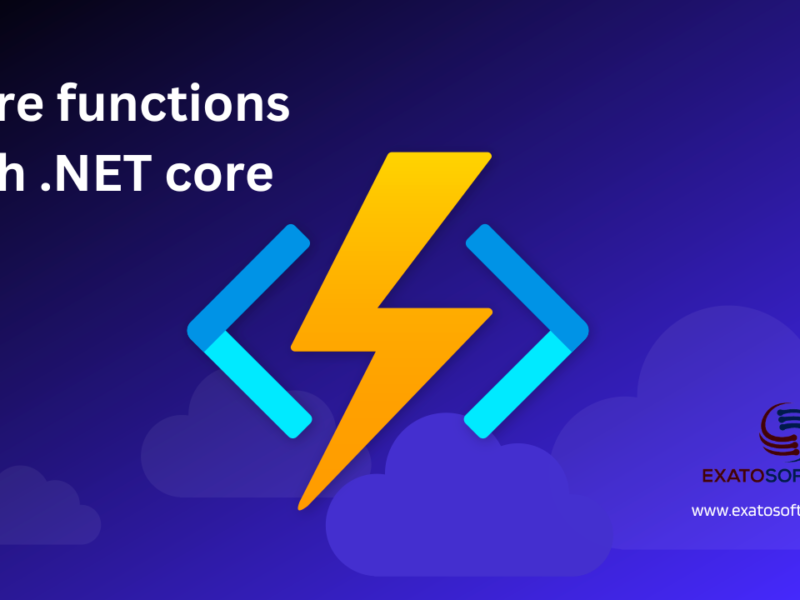Performance tuning and optimization are critical aspects of .NET application development, ensuring that applications meet performance requirements, deliver responsive user experiences, and efficiently utilize system resources. Here are some common challenges and strategies for performance tuning and optimization in .NET application development:
1. Memory Management:
Challenge: Inefficient memory allocation and management can lead to excessive memory usage, garbage collection (GC) overhead, and memory leaks.
Strategy: Use tools like the .NET Memory Profiler to identify memory leaks and optimize memory usage. Employ best practices such as minimizing object allocations, using object pooling for frequently used objects, and implementing IDisposable for resource cleanup.
Example: Use of Large Object Heap (LOH)
– Challenge: Large objects allocated on the Large Object Heap (LOH) can cause fragmentation and increase GC overhead.
– Solution: Allocate large objects judiciously or consider alternatives such as memory-mapped files or streaming.
2. Garbage Collection (GC) Overhead:
Challenge: Frequent garbage collection pauses can degrade application performance, causing interruptions in responsiveness.
Strategy: Optimize object lifetimes to reduce the frequency and duration of garbage collection cycles. Consider using structs instead of classes for small, short-lived objects, and tune GC settings such as generation sizes, GC mode (workstation vs. server), and latency modes to align with application requirements.
Example: Gen2 GC Pauses
– Challenge: Long Gen2 garbage collection pauses can affect application responsiveness.
– Solution: Optimize large object allocations, consider using the Server garbage collection mode, and tune GC settings like GC latency mode.
3. Database Access:
Challenge: Inefficient database access patterns, including excessive roundtrips, unoptimized queries, and inadequate connection management, can degrade application performance.
Strategy: Use asynchronous database access methods (Async/Await) to minimize blocking I/O operations and improve scalability. Employ techniques such as connection pooling, query optimization, and caching to reduce latency and improve throughput. Consider using an ORM (Object-Relational Mapper) like Entity Framework Core for abstracting database interactions and optimizing data access code.
Example: Entity Framework Core Queries
– Challenge: Inefficient LINQ queries in Entity Framework Core can lead to excessive database roundtrips.
– Solution: Optimize LINQ queries by eager loading related entities, using compiled queries, and monitoring generated SQL statements for performance.
4. Concurrency and Parallelism:
Challenge: Inefficient use of concurrency and parallelism can lead to thread contention, race conditions, and performance bottlenecks.
Strategy: Use asynchronous programming patterns (Async/Await) to leverage non-blocking I/O and improve scalability. Employ concurrent data structures and synchronization primitives (e.g., locks, mutexes, semaphores) judiciously to prevent data corruption and ensure thread safety. Consider using parallel processing techniques such as parallel loops, tasks, and data parallelism for CPU-bound operations.
Example: Parallel.ForEach
– Challenge: Inefficient use of Parallel.ForEach can lead to thread contention and performance degradation.
– Solution: Monitor CPU utilization and thread contention using performance profiling tools, and adjust parallelism levels accordingly.
5. Network Communication:
Challenge: Inefficient network communication can introduce latency, packet loss, and scalability limitations.
Strategy: Use asynchronous networking libraries (e.g., HttpClient) to perform non-blocking I/O operations and maximize throughput. Employ connection pooling and keep-alive mechanisms to reuse network connections and minimize connection setup overhead. Implement data compression (e.g., gzip) and protocol optimizations (e.g., HTTP/2) to reduce bandwidth usage and improve transfer speeds.
Example: HttpClient Requests
– Challenge: High latency and resource exhaustion due to excessive HttpClient instances or unclosed connections.
– Solution: Use HttpClientFactory for HttpClient instance management, configure connection pooling, and implement retry policies for transient network errors.
6. Caching and Data Access Optimization:
Challenge: Inefficient data access patterns and lack of caching strategies can result in repeated computation and unnecessary database queries.
Strategy: Implement caching mechanisms (e.g., in-memory caching, distributed caching) to store frequently accessed data and reduce latency. Employ caching strategies such as expiration policies, sliding expiration, and cache invalidation to ensure data consistency and freshness. Consider using data prefetching and lazy loading techniques to optimize data access and minimize roundtrip latency.
Example: In-Memory Caching
– Challenge: Inefficient cache invalidation and memory pressure in in-memory caching solutions.
– Solution: Use sliding expiration and cache dependencies for efficient cache invalidation, and monitor cache hit rates and memory usage to optimize cache size.
7. Code Profiling and Performance Monitoring:
Challenge: Identifying performance bottlenecks and hotspots can be challenging without proper instrumentation and monitoring.
Strategy: Use profiling tools (e.g., PerfView, dotTrace) to analyze application performance and identify CPU, memory, and I/O bottlenecks. Instrument code with performance counters, logging, and tracing to capture runtime metrics and diagnose performance issues. Monitor application health and performance in real-time using application performance monitoring (APM) tools like Azure Application Insights or New Relic.
Example: Application Insights
– Challenge: Lack of visibility into application performance and resource utilization.
– Solution: Instrument application code with custom telemetry using Application Insights SDK, and use performance monitoring dashboards to identify performance bottlenecks and trends.
8. Serialization and Deserialization:
Serialization is the process of converting objects or data structures into a byte stream or another format for storage or transmission, while deserialization is the reverse process of reconstructing objects from the serialized data.
Performance Implications
1. Network Communication: Efficient serialization can reduce the size of data payloads transmitted over the network, resulting in lower latency and improved performance.
2. Storage: Serialized data can be stored in various forms such as files or databases. Optimized serialization formats can reduce storage requirements and improve read/write throughput.
3. Interoperability: Serialization enables communication between heterogeneous systems or components by serializing objects into common formats like JSON or XML.
Optimization Strategies:
1. Use Binary Serialization: Binary serialization (e.g., BinaryFormatter in .NET) is typically faster and more compact than text-based serialization formats like JSON or XML.
2. Consider Data Contracts: Use data contracts or serialization attributes (e.g., [DataContract], [DataMember]) to control which members of a class are serialized and exclude unnecessary data.
3. Use Compression: Compress serialized data using algorithms like gzip or deflate to further reduce payload size during transmission or storage.
Example: JSON Serialization
– Challenge: Inefficient JSON serialization and deserialization can impact performance, especially in high-throughput scenarios.
– Solution: Use high-performance JSON serialization libraries like Utf8Json or System.Text.Json, and consider using binary serialization formats for performance-critical scenarios.
9. Algorithms and Data Structures:
Algorithms and Data Structures form the foundation of software design and are fundamental to efficient data processing and manipulation.
Performance Implications:
1. Time Complexity: The choice of algorithms directly impacts the time complexity of operations such as searching, sorting, and manipulation of data structures.
2. Space Complexity: The space efficiency of data structures influences memory usage and can affect application performance, especially in memory-constrained environments.
3. Concurrency: Concurrent data structures and synchronization mechanisms impact scalability and parallelism, affecting application performance under high load.
Optimization Strategies:
1. Choose Efficient Algorithms: Select algorithms with optimal time complexity for specific tasks (e.g., quicksort for sorting, hash tables for lookups) to minimize execution time.
2. Optimize Data Structures: Choose data structures that best match the access patterns and operations performed on the data (e.g., arrays for random access, linked lists for insertions/deletions).
3. Consider Parallelism: Use parallel algorithms and data structures (e.g., concurrent collections, parallel LINQ) to leverage multi-core processors and improve throughput.
4. Memory Management: Optimize memory allocation and deallocation patterns to reduce overhead from garbage collection and memory fragmentation.
Example: Consider the performance difference between sorting algorithms such as quicksort and bubblesort. Quicksort typically exhibits O(n log n) time complexity, making it more efficient than bubblesort, which has O(n^2) time complexity. Choosing quicksort over bubblesort can significantly improve sorting performance, especially for large datasets.
By addressing these challenges and applying performance tuning and optimization strategies, you can ensure that your applications deliver optimal performance, scalability, and reliability across diverse deployment environments and usage scenarios.



